Artificial silk flowers create a pleasant atmosphere. With the help of unique compositions, designers decorate wedding events, decorate festive tables, and create unique bouquets with their own hands. Handmade silk flowers look great on hairpins and headbands. This article presents diagrams for beginners to make silk flowers step by step with your own hands.
Why silk?
Having examined various types of fabrics, we can conclude that the main distinguishing feature of natural silk is its soft, noble shine. The fiber has a triangular cross-section and refracts light like a prism. Due to this optical effect, the silk material looks light and elegant. It resembles the smooth surface of water.
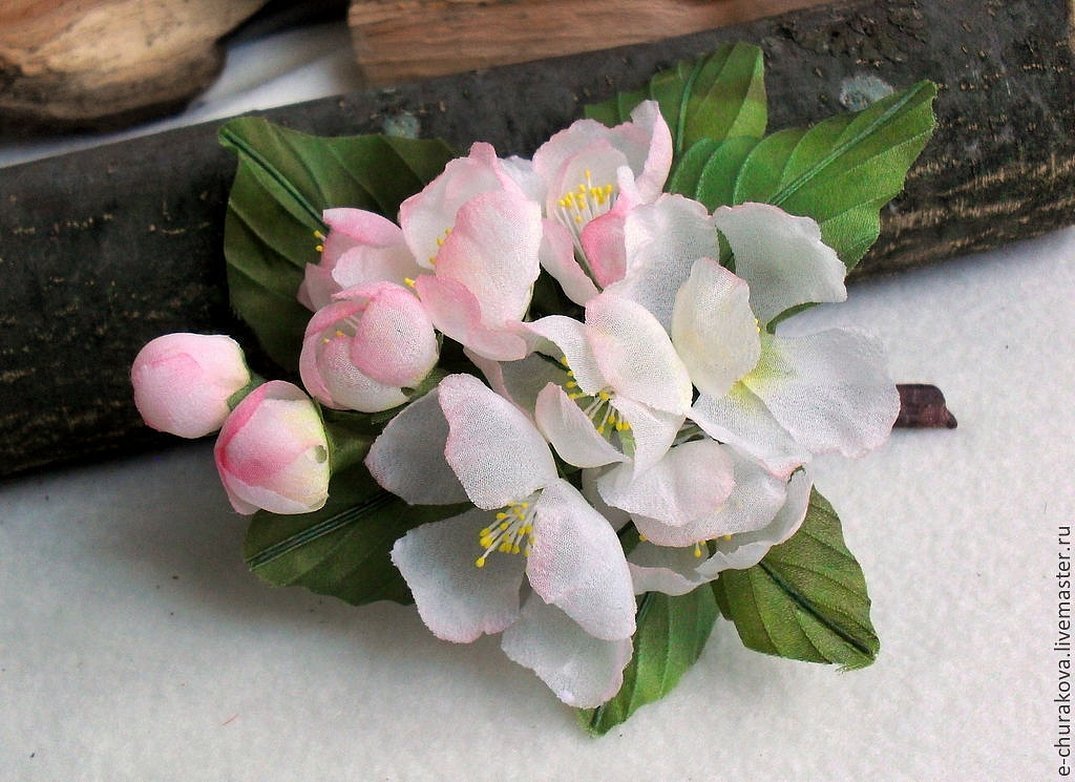
Advantages of fabric
General advantages of silk fabrics:
- breathability – thanks to the unique properties of the material, the skin does not overheat (therefore, such toys can be used by small children);
- hygroscopicity – the material perfectly absorbs moisture from the body;
- hygiene – silk does not allow tissue parasites to reach the body;
- elasticity – the material stretches well without deforming.

This delicate, very light, and pleasant to the touch airy material is a real find for many needlewomen. It is most often used to make flowers. Unique varieties of material also include organza or satin.
Please note! The popular kanzashi technique is widely used for folding decorative flowers.
A similar Japanese silk flower can often be seen as decorative elements on curtains, drapes, valances, lambrequins. And very beautiful jewelry and women's accessories are made from silk threads and wire using the ganutel technique. Beginner craftswomen should choose inexpensive synthetic fabric (artificial silk - viscose) or organza for folding artificial flowers to get the hang of it.
Materials and tools that will be needed
In the production of flowers, natural woven silk is used, treated with a special composition. Thus, all the details of the flower will hold their shape well. For roses, you can choose a delicate and light material - organza, it will give airiness to the flower. For leaves - satin with a barely noticeable gloss.
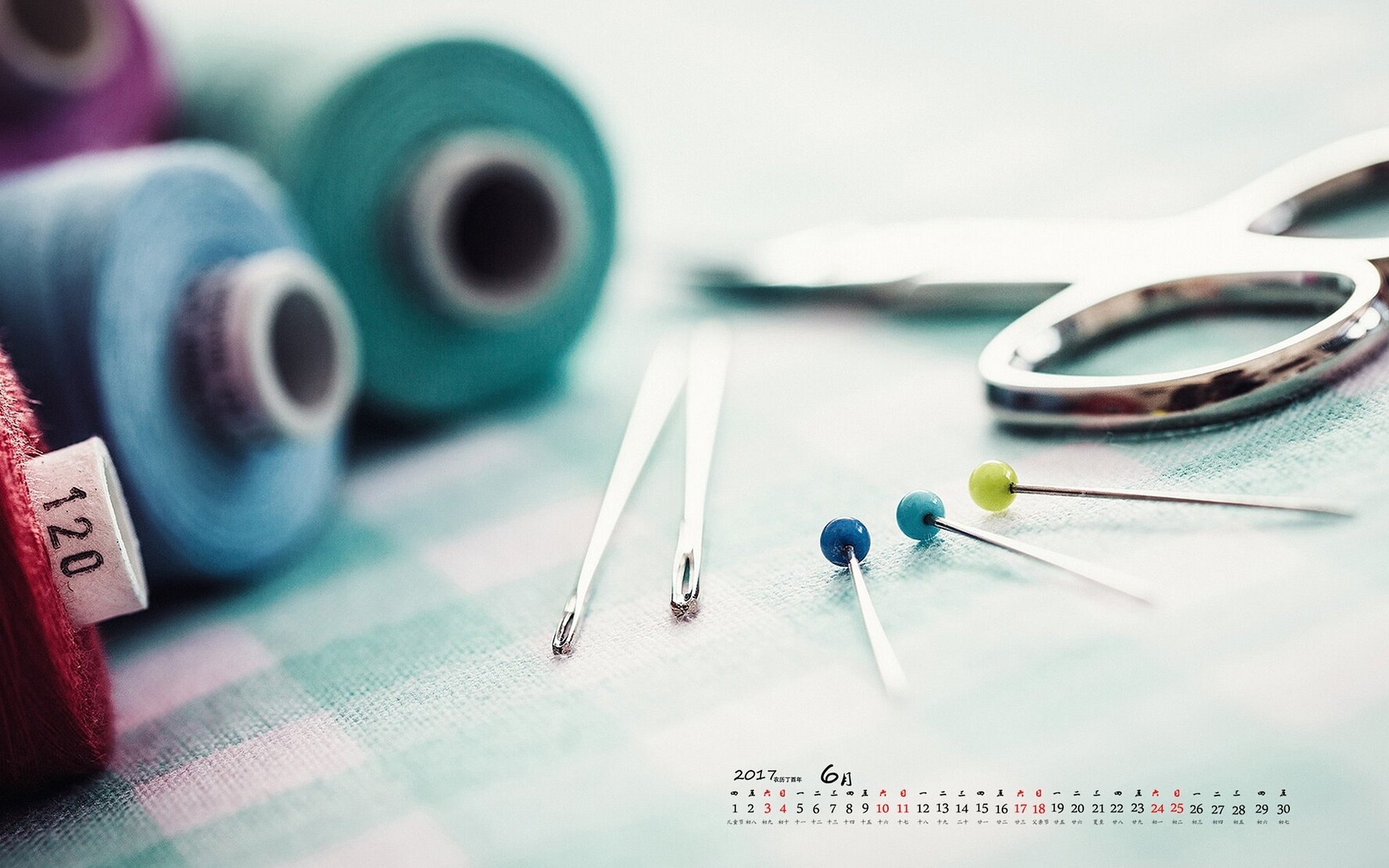
To get a unique masterpiece, the following tools will come to your aid:
- organza for roses;
- leaf satin;
- thin silk ribbon or curtain;
- soldering iron with attachments;
- tweezers;
- scissors;
- glue;
- thin wire 0.4 mm;
- silk paints;
- cotton wool;
- lining fabric in the color of the leaves (chiffon).
We create beauty with our own hands
A step-by-step master class will help novice needlewomen create a real masterpiece for the holiday.
First, you need to prepare a solution for gelatinizing silk. Add 3 teaspoons of gelatin to 200 ml of water. Then wait until the ingredient is infused. Then the mixture needs to be slightly warmed up on the stove.
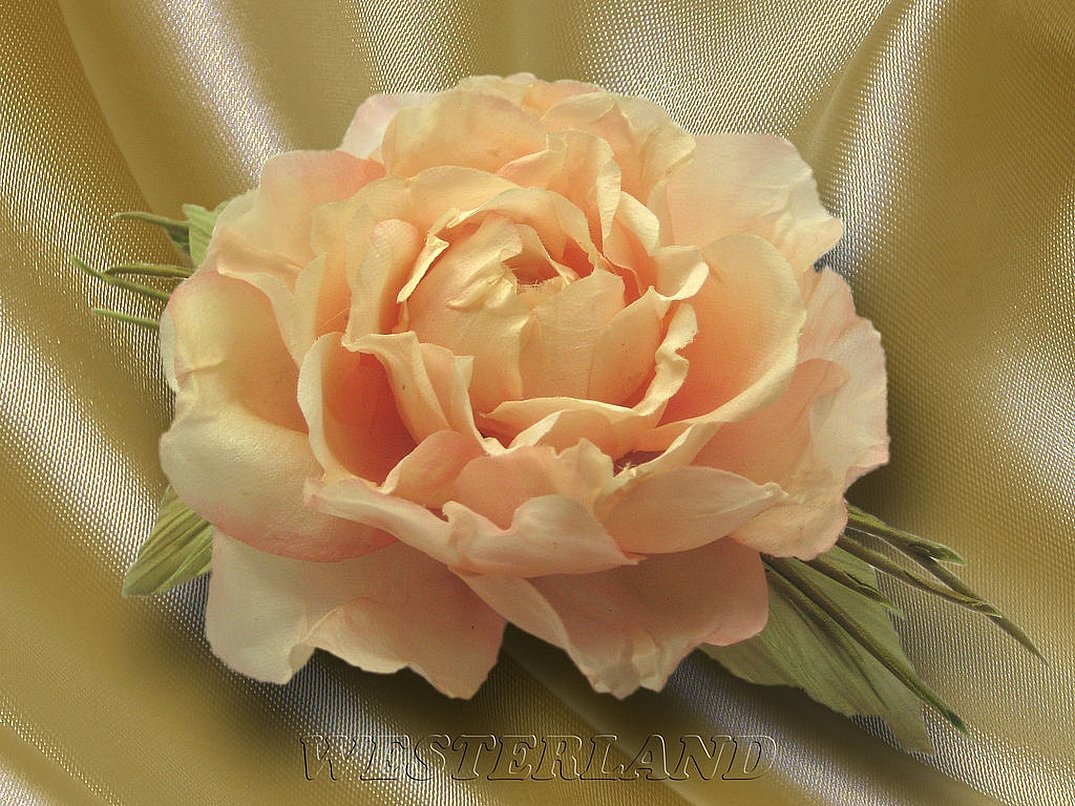
Important! Once the gelatin has dissolved in the heated water, the silk should be dipped into the prepared solution. When the fabric is thoroughly soaked in this solution, the material should be carefully removed and hung to dry (squeezing the silk before drying is not recommended).
How a flower is formed – the main stages
Girls decorate their headbands and hairpins with such flowers, making them unique. They are also the main attribute of a wedding or other celebration. They are used to decorate banquet rooms and cars.
To form a flower, you should cut out 7 large, 7 medium and 7 small petals from gelatinized silk. Experts recommend using cardboard templates. To obtain the products, you need to cut out the blanks at an angle of 45° to the grain line.
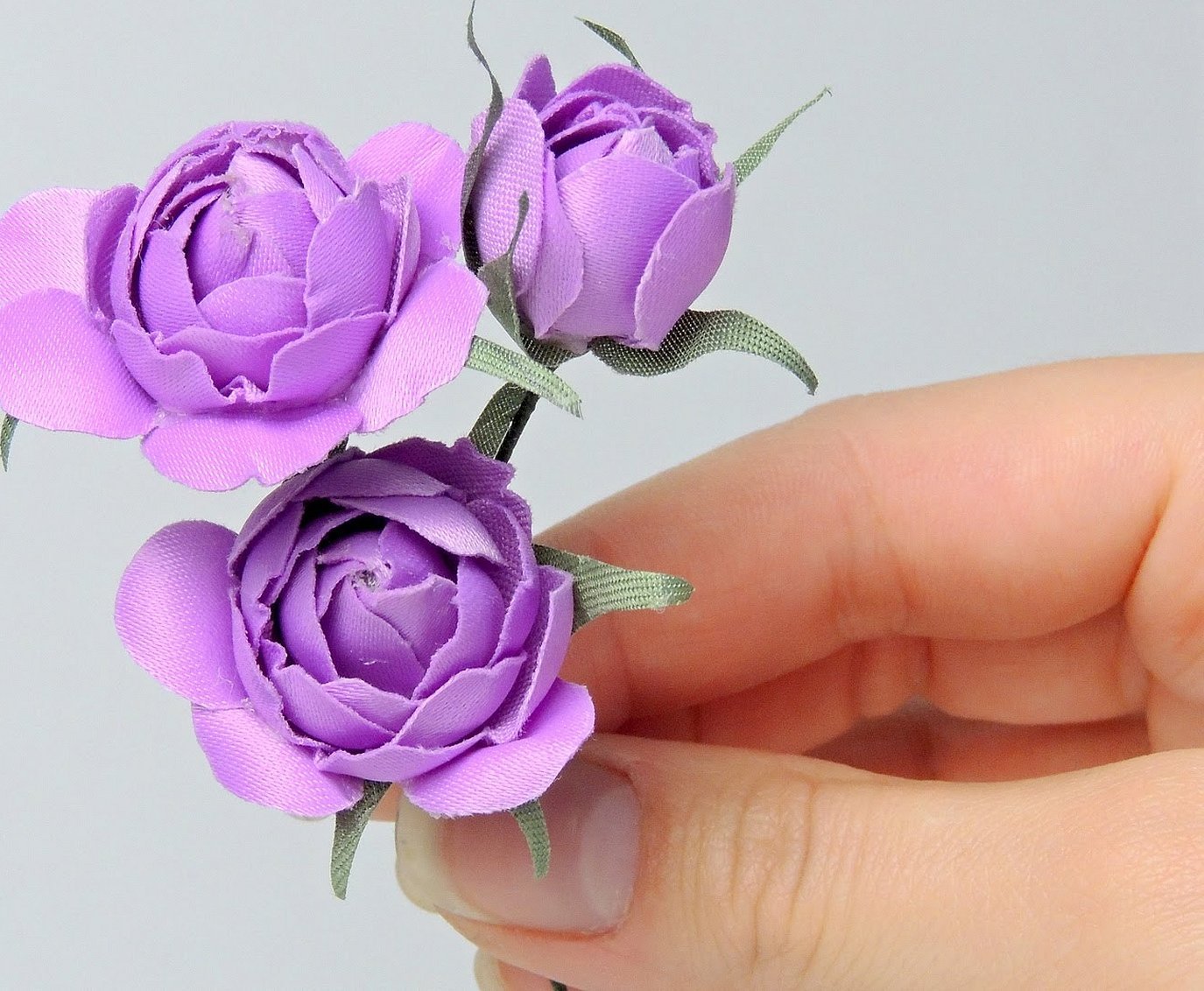
Next, take a thin fabric that can be used as chiffon to create a beautiful texture in the form of a goffer on the petals of a silk flower. Now you need to fold the petal in half and lay it at an angle of 45° to the grain of the chiffon.
The petal blank must be pressed to the surface with the wrist. The basis of the blank will be a corrugated sheet.
All of the above steps should be done with the remaining silk petals, and then carefully fold them with a slight shift relative to each other and sew with a strong thread in the color of the silk.
Delicate silk aster in Japanese technique
Japan is a country where floriculture is an important art. The history of making beautiful flowers is known for a long time. Floriculture was born from customs and habits.
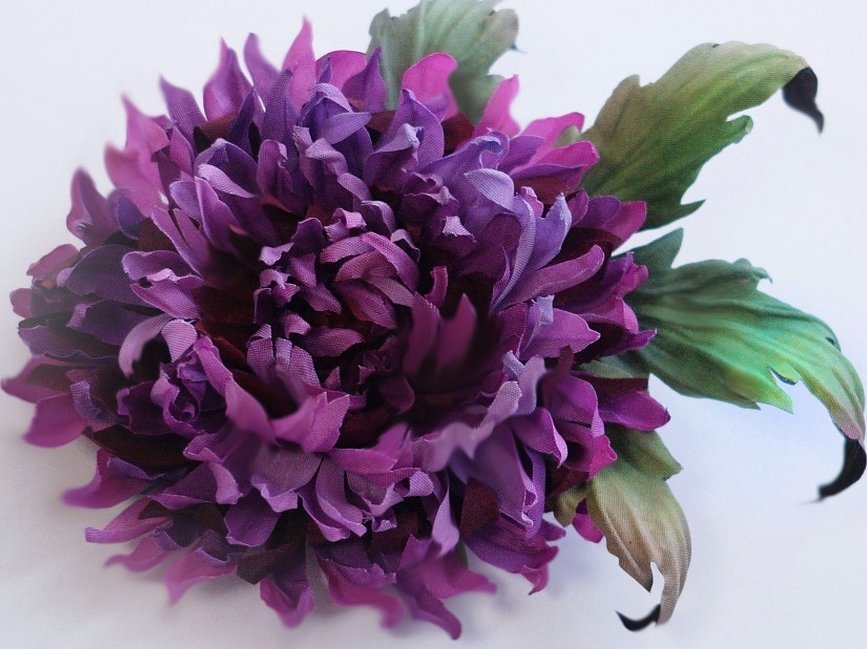
To complete the work using Japanese technology, you will need the following materials:
A material with an impregnation, thanks to which the flower will hold its shape (natural silk - habotai, to make petals, satin for leaves);
- batik paints;
- palette;
- brush;
- tweezers;
- newspaper;
- towel;
- wire wrapped in paper;
- stamens for flowers;
- adhesive solution;
- paper tape in a roll for wrapping stems;
- additional materials (wide Japanese foot, as well as Japanese foot with a groove);
- 3 soldering irons;
- Medium soft rubber cushion covered with fabric.
Performing actions
- From the habotai you need to cut out petals in the shape of hearts. About 10 petals are needed for one flower. They can be cut out in several layers. Then you take satin, from which you cut out a leaf, a backing and a strip for the trunk.
- The petals need to be painted purple. The leaves, the lining and the stem are painted green and slightly tinted purple, for a more lively and at the same time fantasy color.

Important! After the sheet has dried, use PVA glue to glue the wire to the center of the sheet, and then add the side leaves.
The petals need to be moistened with a towel. Then the soldering irons are connected. One soldering iron (without a nozzle) should be placed on a stand and the tweezers heated in it. Using the heated agent, the petals are curled along the edge.
To shape the petals, you need to use a soldering iron with a nozzle. A narrow paw with a groove is used to shape the leaves. A central vein is drawn along the front side of the leaf. Then you need to process each leaflet from the back side.
Next, you will have to glue the petals onto the wire, two at a time. You need to make five pairs of petals for each flower. Then, a bunch of stamens is fixed to the wire, which is the center of the product. Then, the stem is glued, the backing is coated with adhesive solution, and connected to the flower. To make a puncture in the stem, you need to use an awl. The base of the leaflet needs to be coated with glue and only then inserted into the stem.
Please note! You need to hold it in your hands for a little while so that the sheet is firmly fixed.
After this, you need to carefully straighten out the finished parts. You will get an ideal flower bouquet for the room, made using the Japanese technique.
Water lily
A water lily or water lily is made using various methods. Each needlewoman embodies her idea of its creation in her own way. At this stage, we consider the method of making a water lily from pieces of material using the kanzashi technique.

Materials and equipment for work
This option will require:
- any plain fabric of two close shades;
- tailor's pins;
- scissors;
- a piece of silk;
- needle and thread.
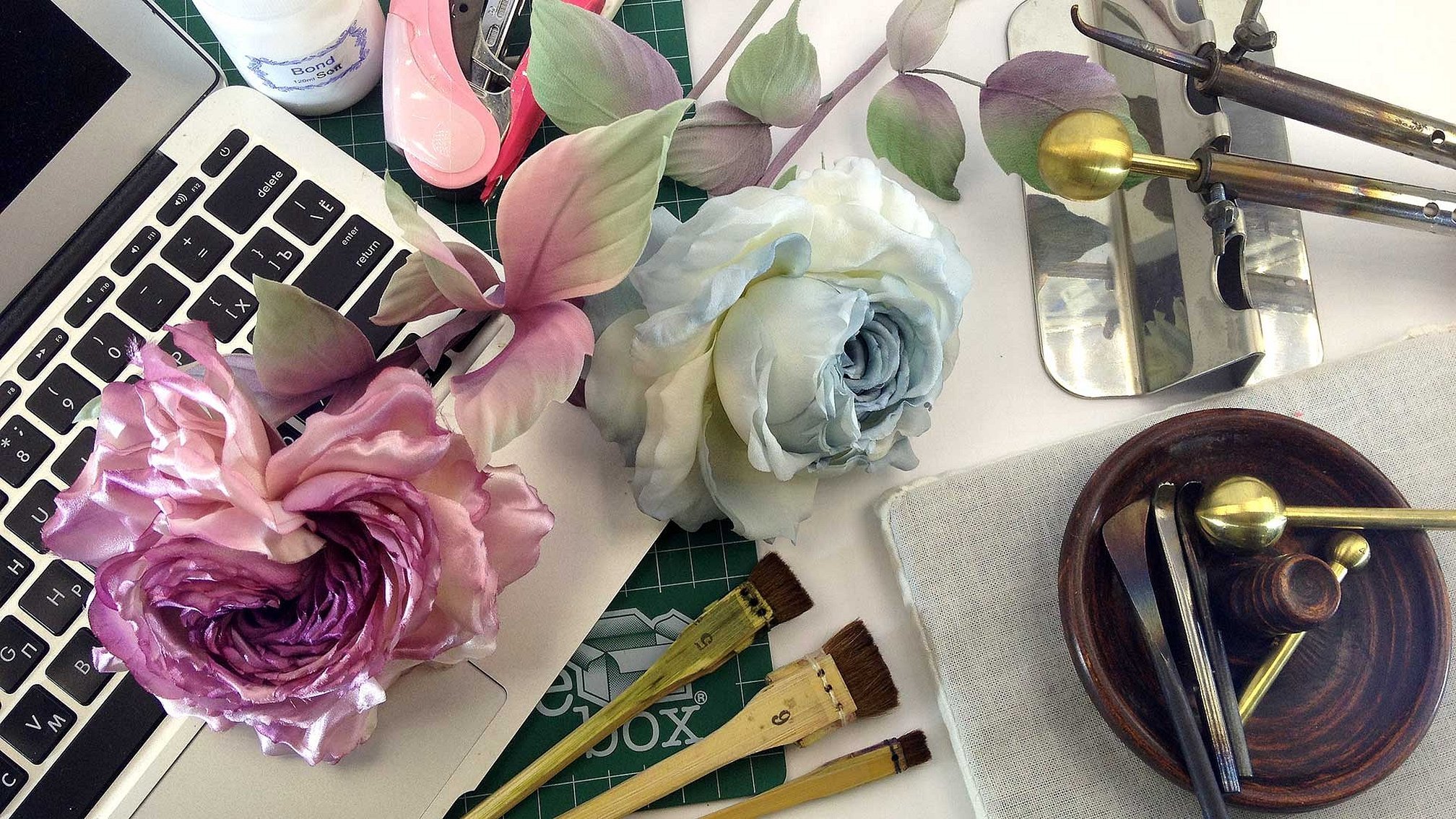
You should cut squares of two sizes: 7.5 cm × 7.5 cm – 16 pieces and 5 cm × 5 cm – 8 pieces.
First, petals are made from large squares. Then, the fabric is taken and carefully folded in half several times.
Now you need to make a fold in the center of the lower corner inward. You should pierce all the folds with a tailor's pin. Then you need to take a needle and thread and stitch along the chip. The thread will have to be pulled tightly, and then tie a knot. As a result, you will get a water lily petal.
Then for the first circle you need to make petals (eight pieces) and connect them together with a thread or ribbon. The thread needs to be pulled tight, tied in a knot, and then carefully cut.
The second circle is made of eight petals. They need to be placed on top of the first. The petals should be between the petals of the first circle. Then these circles need to be connected with a thread.
Now you need to make the third row of petals from small pieces of silk material. You should take a square of silk, fold it in half twice. Then you will have to make a fold in the center of the corner on the outside. Those side triangles that rise up to the convex fold need to be pinned.
Next, take a needle and thread to create the third circle. The small petals need to be connected to each other. The resulting circle should be placed in the center between the petals of the second row and secured with a thread.
Then you need to turn the workpiece over to the back side. Cut out a small circle from the fabric and attach the finished bud to it. The center should be filled with soft filler.
Please note! You can glue a small circle on top and embroider several patterns from beads.
Large composition in kanzashi technique
Flowers made of fabric using the kanzashi technique are very original. Such an accessory can become a decoration for a banquet hall or a wedding car.
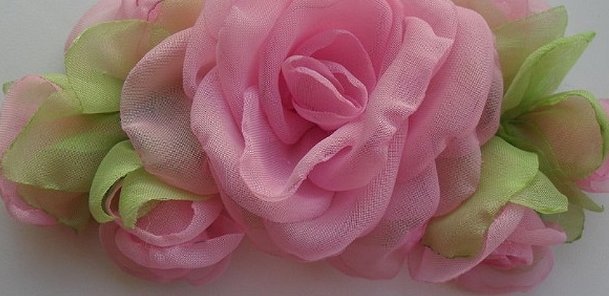
To create a flower you need:
- satin wide ribbon of different shades,
- glue gun,
- threads, needle, scissors,
- beads, seed beads, rhinestones, etc.,
- cardboard or ball, cellophane bag.
First, you need to take a wide ribbon and cut it into 7 cm lengths. Then you should fold it in half and cut it at an angle using a soldering iron. On the other side, you need to wrap the ribbon in the opposite direction and singe the edge, due to which the two ends of the ribbon will be connected. In this way, you can make the desired number of petal blanks, after which you should take cardboard and draw a circle along which the petals will be glued.
Please note! The larger the diameter of the circle, the larger the accessory will be.
All the petals will have to be glued in a circle.
Every woman has some fabric scraps in her house that are hard to use anywhere. In order not to throw them away, you can think a little and ultimately create a real masterpiece. When making original compositions, there is always room for imagination. A bouquet, a decoration for the interior of a bedroom or kitchen, an original tieback or headband - all these products, made with your own hands, will become an unusual gift for yourself, your family members and friends.




